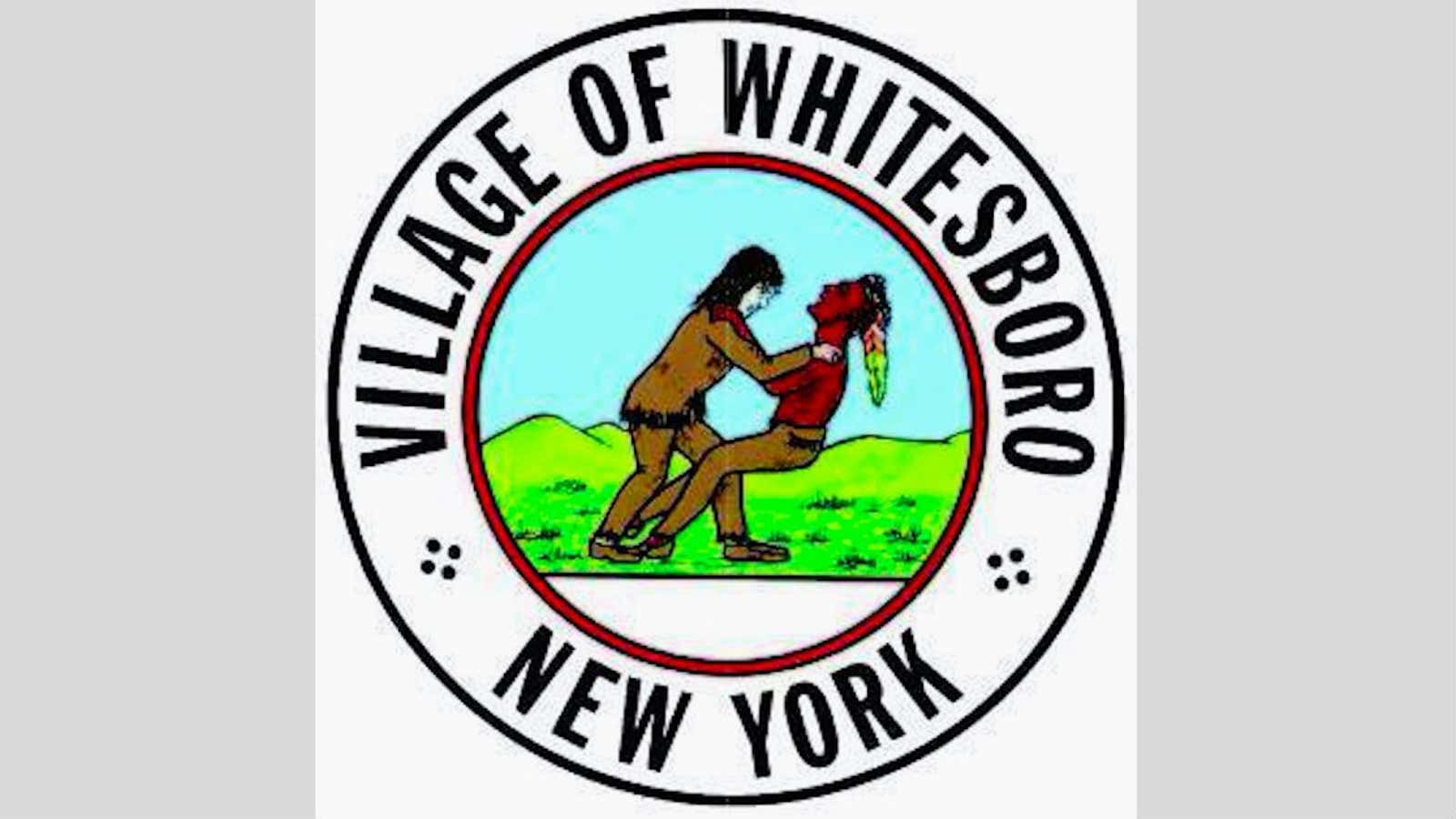The image above is the official seal of Whitesboro, NY. This rendering, which shows a white settler in the process of wrestling a Native American man to the ground, is currently emblazoned on municipal vehicles, police cars, and official letterhead.
Last summer, during a national debate over the public display of the Confederate flag, Whiteboro’s seal was mentioned as a symbol that projects a less-than-positive message about inclusivity and diversity. After a Change.org petition drew nearly 10,000 supporters, Whitesboro agreed to put the issue to a vote.
That vote happened Jan. 11. And they’re keeping it. Of the 212 locals who turned up to vote, 74% chose to keep the seal.
“There’s nothing racist or white power about it. It’s HISTORY it’s what happened and it wasn’t a BAD thing,” a commenter wrote to the local paper.
Whitesboro is a village of roughly 3,800 people, 97% of whom identified as white in the 2010 census. It is named for its founder, a wealthy patent holder named Hugh White.
According to the village’s official history, the seal depicts a pivotal moment in the early days of Whitesboro, in which a White family member was challenged to a friendly wrestling match by a local Oneida man and won almost immediately after “a fortunate trip.”
The victory “made more manifest the respect of the Indian for White,” the history reads, who subsequently “became a hero in the eyes of the Oneida Indians.”
In 1977, a Native American group sued the city to change the seal, because—well, look at it. In a rare concession, the village agreed to alter the image to move White’s hands closer to his opponent’s shoulders. Previously, they had been depicted solidly around the Oneida man’s neck.
